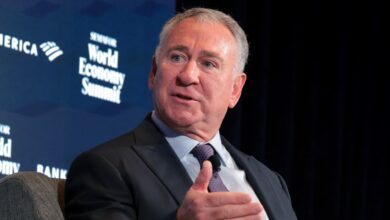Fed’s Hammack calls for patience in assessing what impacts tariffs will have on the economy

In a recent interview on CNBC’s “Squawk Box,” Cleveland Fed President Beth Hammack emphasized the importance of patience when it comes to assessing the impact of tariffs on inflation and economic growth. Since taking over as head of the central bank district in August 2024, Hammack has been navigating a landscape of uncertainty and refrained from committing to a specific course of action regarding interest rate policy.
Hammack’s cautious approach comes at a critical juncture for the Federal Reserve, as they grapple with the repercussions of President Donald Trump’s tariffs on inflation and employment. Chair Jerome Powell and other Fed officials have expressed concerns about how the duties could affect the central bank’s dual mandate of maintaining price stability and maximizing employment.
Market expectations suggest that the Fed will maintain interest rates during their upcoming meeting on May 6-7, with potential rate cuts in June and possibly further reductions by the end of the year. While Hammack does not have a vote on the rate-setting Federal Open Market Committee this year, she will have a say in 2026.
The uncertainty surrounding tariff policies and the Fed’s response has led to significant market volatility in recent months, with stocks fluctuating, Treasury yields rising, and the U.S. dollar weakening. Hammack, a former Goldman Sachs executive, stressed the Fed’s focus on how market movements impact the broader economy rather than solely on financial indicators.
Despite concerns raised by surveys and softer economic data, Hammack highlighted that the “hard” economic data, such as unemployment and inflation, remains relatively positive. However, she acknowledged that businesses are feeling the weight of uncertainty, leading some to delay investment and hiring decisions.
As Hammack navigates these challenging economic conditions, she remains committed to steering the real economy rather than reacting to short-term market fluctuations. While acknowledging the limitations of forecasting, she emphasized the importance of staying vigilant and responsive to evolving economic conditions.
In conclusion, Hammack’s measured approach underscores the complexity of current economic challenges and the importance of data-driven decision-making. By prioritizing patience and a thorough assessment of the economic landscape, she aims to guide the Federal Reserve towards policies that support long-term growth and stability.





